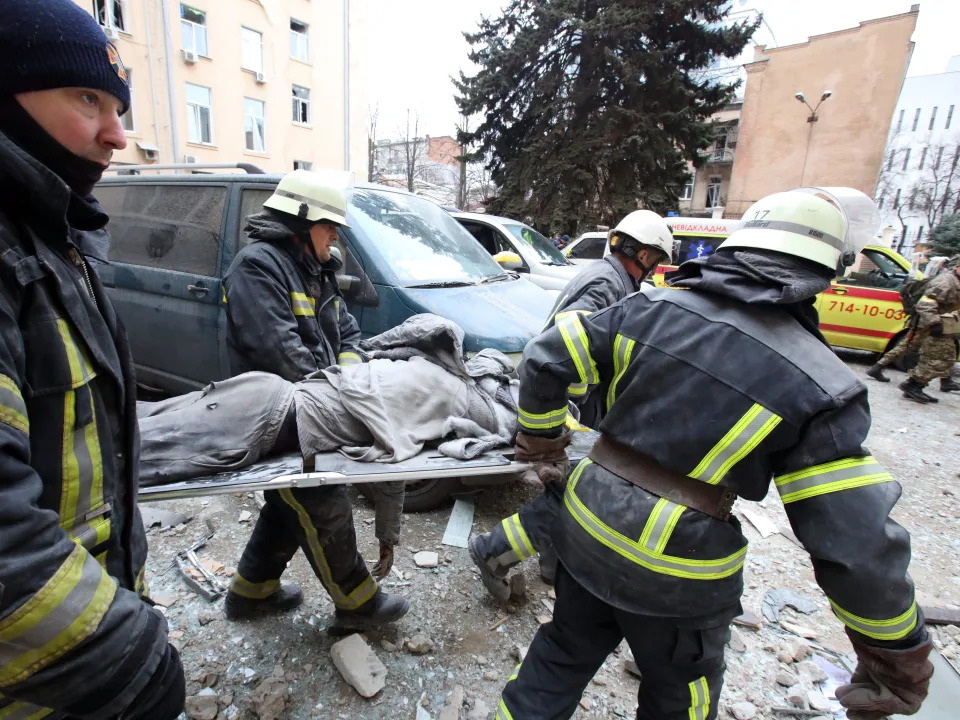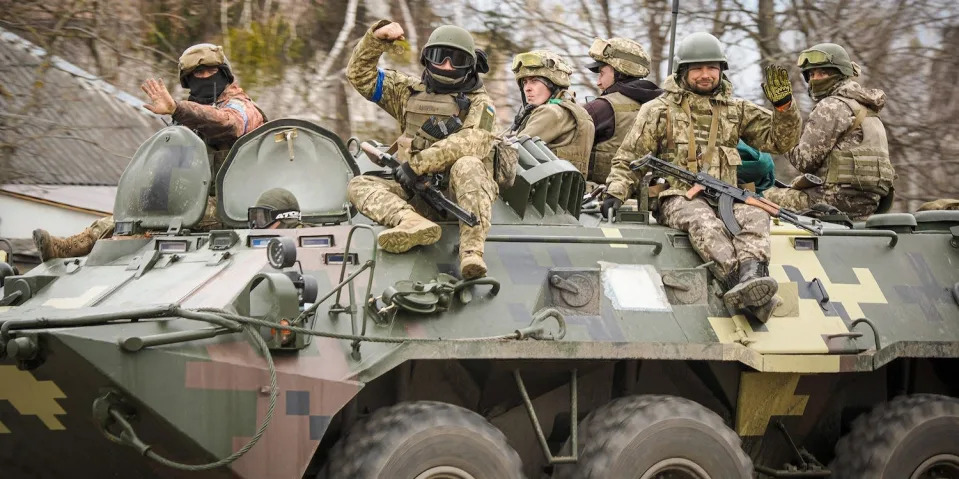Daily Beast
The Embarrassing Truth Behind Putin’s War Failures
David Volodzko – April 22, 2022

The ongoing war in Syria was supposed to be a crucible for the modern Russian war machine, reforming its operational capabilities in preparation for future conflicts. Now that Russia is facing a test of those skills in Ukraine, it is turning into a disaster that they should have seen coming.
Moscow officially lost only 112 servicemen in six and a half years in Syria, compared to what it admits are 1,351 in a single month in Ukraine—the true numbers are likely to be far higher. And they have been forced to humiliatingly pull out around 40,000 troops from around Kyiv and Chernihiv having failed to make any significant progress in those regions and falling back to their old targets in eastern Ukraine. This raises the question of exactly what the Kremlin learned in Syria and, more importantly, what it should have learned but obviously has not.
Unlike Ukraine, Syria’s cities would never be part of the Russian federation and could therefore be flattened. Meanwhile, its non-white population was framed as foreign terrorists. Jabhat al-Nusra fighters, ISIS, and hundreds of children were portrayed to the voters back home as equally fair targets. By contrast, Ukrainians are largely seen by the Russian public as Russians themselves or, at the very least, close cousins. These factors freed Russia up to use Syria as merely a means to an end, or more specifically, two ends.
First, it used Syria as a proving ground to enhance command-and-control coordination. Like its Soviet predecessor, Russia’s military is an artillery force with armored battalions and the ground-based nature of its power is not as fast nor flexible as air or naval forces, making such coordination critical. Not to mention, if such command coordination is achieved, then as the Institute for the Study of War’s lead Russia analyst, Mason Clark, wrote in a 2021 report, it “will erode one of the United States and NATO’s key technological advantages.”
Second, Moscow declared a withdrawal from Syria in March 2016, then again in January 2017, and again in December of that year. This wasn’t just a feint to get its enemies to lower their guard, it also helped prevent Russia from being pulled too deeply into the war, thus minimizing losses. But just as importantly, it broke the war into a series of campaigns, allowing Moscow to rotate its forces through Syria, giving them ample combat experience. As Michael Kofman, director of the Russia studies program at the Center for Naval Analyses (CNA), wrote in a 2020 report, “The entire Russian military must now serve [in Syria] in order to progress in rank.”
According William Alberque, the director of strategy, technology and arms control at the International Institute for Strategic Studies (IISS), some of the lessons that were not learned well enough include use of drones for artillery spotting, the danger of MANPADS on the contested battlefield, and the need for secure supply lines. Each of these factors have proven devastating for Russian forces in Ukraine.
But the biggest lessons, he said, have been how to detect, disrupt, and destroy small groups of fighters, the importance of the destruction not just of suppression of enemy air defenses, the use of secure comms, the value of precision-guided missiles, and the benefit of drawing the enemy out rather than engaging in urban warfare.
Albuquerque added that Russia learned a few more things in Syria. Namely, “how to destroy cities, terror tactics to make civilians flee, and the use of proxies as holding forces/cannon fodder.”
So what went wrong? For one thing, Russia is one of the most corrupt nations in the world, and by far the most corrupt major power. Ruling a mafia state has its advantages if you’re the Godfather, but it’s hard to know who to trust. Moscow recently purged 150 Federal Security Service (FSB) agents and sent Sergei Beseda, the head of the FSB’s 5th Service, which handles intelligence in Ukraine, to Lefortovo Prison, which was used under Stalin to conduct torture-based interrogations and mass executions. One theory says Beseda gave information to the CIA, but the official reason, which may very well be true, is that he lied to the state and stole funds meant for espionage activities in Ukraine. If true, this means Putin’s own spy chiefs not only let him bring a knife to a gun fight—they sold off the combat blade and bought a cheap butter spreader.
Another thing that led Putin astray was his own over-confidence. Since taking office in 2000, he has been involved in six wars—Chechnya, Georgia, the North Caucasus, Syria, the Central African Republic (CAR), and Ukraine.All but the last have been victorious. Syria and the CAR are ongoing, but the preservation of Bashar al-Assad’s regime and Faustin-Archange Touadera’s administration represent strategic wins. Putin thought he couldn’t lose.
Corruption and over-confidence prepared a path, but the biggest problem was Putin’s lack of experience ina war of this scale. Syria was a limited deployment in a far-off desert nation with minimal ground forces, Georgia only lasted 12 days, and Russia supported Touadera in the CAR from a distance with weapons, military instructors and Wagner mercenaries. Besides, even if Ukraine was the same game as Syria, and Russia could simply copy/paste its lessons, it still wouldn’t help since Moscow has apparently forgotten those lessons.
Russia did apply its Syria lessons in Ukraine—but it did so in 2014, when it used Crimea to train a rapid-reaction professional force. Now, however, Moscow is running four combined arms headquarters independently with only partial management at the defense center in Moscow. Why? Partly because it’s not just propaganda when Putin talks about a “special military operation.” He truly believed the rest of Ukraine, like Crimea, would offer little resistance and that the war would only last a matter of days.
In Syria, says military historian Peter Caddick-Adams, “They were not up against a peer adversary—in fact they have never been: Afghan, Chechnya, Georgia, Syria—unlike in Ukraine. Syria was predominantly an air war, with little threat, so Russian pilots treated it more as range practice, dumping munitions on preselected targets” he told The Daily Beast.
“Thus, what Russia did not learn from Syria was how to coordinate an all arms battle (artillery, armor, anti-tank, air defense, infantry, engineers, etc) at high tempo in complex terrain with aircraft of different types, helicopters, airborne and marine troops, with a well-balanced logistics and supply system—which is what they have needed for Ukraine.”
He added, “Russian communications are very lowbrow, and they are using unencrypted mobile phones in Ukraine, a bad habit picked up in Syria, where few opponents could understand Russian or had the technical competence to intercept.”
Simply put, Russia’s PhD in desert warfare is making for a poor career in Ukraine. Indeed, few things have revolutionized the modern Russian military like the war in Syria, but nothing will affect it quite like Ukraine. One might even call this Russia’s Vietnam moment. But one thing’s for certain, Russia looked at Ukraine and mistook a tiger for a cat. Now even if it decides to cut its losses and completely withdraw, it may not be so easy. As the old Chinese saying goes, when you’re riding a tiger, the hard part is getting off.





